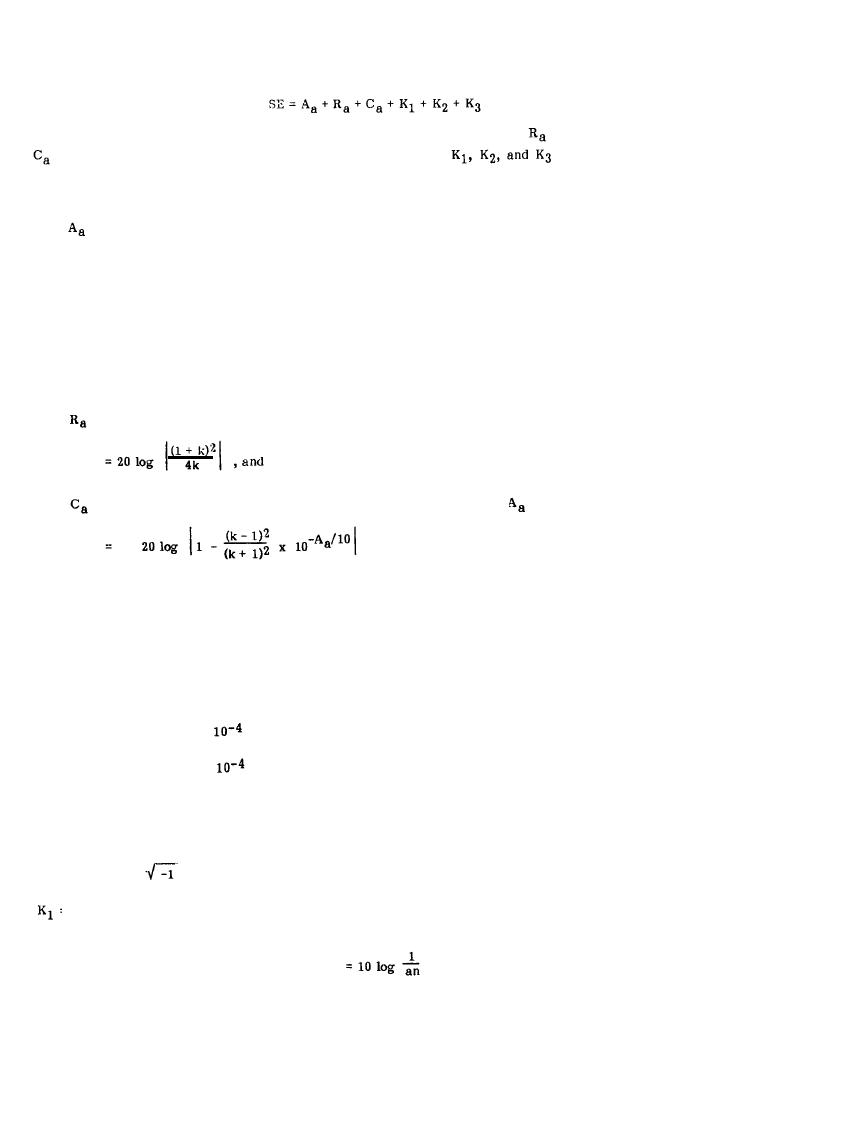

Custom Search
|
|

|
||
 MIL-HDBK-419A
The shielding effectiveness, in decibels, is expressed as follows (8-8):
(8-12)
where, as with solid shields, A, represents the absorption or attenuation term,
the reflection loss term, and
The
additional
terms
approximate
the
effects
of
the multi-reflection correction term.
items c, d, and e above. Detailed expressions for the screen and perforated metal sheet shielding effectiveness
terms are given as follows for single layer wire cloth or screening:
aperture attenuation in dB,
=
=
(8-13)
27.3 D/W for rectangular apertures, and
=
(8-14)
32 D/d for circular apertures,
where
D
=
depth of aperture in inches,
width of rectangular aperture in inches (measured perpendicular to the E-Vector),
W
=
diameter of circular aperture in inches,
d
=
aperture reflection loss in dB,
=
(8-15)
=
correction factor for aperture reflections (negligible when
is greater than 10 dB)
(8-16)
In Equations 8-15 and 8-16,
=
ratio of aperture characteristic impedance to incident wave impedance, or
k
=
(8-17)
W/3.142r for rectangular apertures and magnetic fields
=
(8-18)
d/3.682r for circular apertures and magnetic fields
=
(8-19)
jfW x 1.7 x
for rectangular apertures and radiated fields
=
(8-20)
jfd x 1.47 x
for circular apertures and radiated fields
=
f
frequency in MHz
distance from signal source to shield in inches
r
=
j
=
= correction factor for number of openings per unit square (applicable when test antennas are far from the
shield in comparison to distance between holes in the shield),
(8-21)
8-34
|
 |
|
 |
||